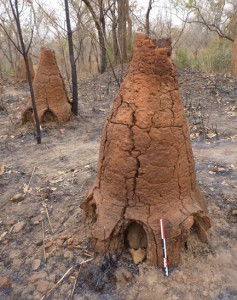Several complementary objectives underlie the study of historical and modern periods in the geographic context of the Falémé Valley, requiring different research methods. The first objective focuses on reconstructing historical scenarios of human settlement leading to the establishment of modern villages, and attempting to understand their mechanisms. To do so requires carrying out in-depth and systematic ethnohistorical surveys with the heads of families representing the different ethnic and social components of the villages.
These surveys should be complemented by the visit, description and identification of the precise location of previously occupied villages, often abandoned; the migration routes should be chronologically delimited, basing each step on the duration of occupation of the different sites, genealogies and references to known historical events. In-depth review of archival documents, accounts and geographic maps of the first European explorers and colonial administrators, as well as historical accounts based on oral traditions will further enable cross-referencing and add to the information obtained in the field. These ethnohistorical surveys also make it possible to examine economic, social, political and religious dynamics, often intimately linked to causes of migration. Understanding of the construction of identity and interactions between the different groups living in the region is of particular interest in the present context of population mixture.
The second objective focuses on documenting modern craft practices, particularly pottery, iron metallurgy and gold panning. Along the Falémé, detailed ethnoarchaeological observations have allowed the location and description of raw material sources, the precise description of production processes and tools, study of the characteristics of finished products and documentation of patterns for their spatial diffusion. Particular attention will be paid to phenomena of technical borrowing, intermarriages between producers of different traditions and stylistic and technical changes. In other words, it will be necessary to examine the relationships between technical and social logics. Laboratory analyses of the raw materials and finished products could complement this research axis, in ways that remain to be defined in terms of more advanced goals. For each of the areas addressed, the data will provide comparative references useful for the interpretation of the regional archaeological record during historical and protohistoric periods. A diachronic approach to pottery, by comparing the many well-dated assemblages from archaeological excavations, will enable reconstruction of the history of techniques and settlement in this still little known region.
The final objective focuses on carrying out an ethnoarchaeological study of traditional architecture, very well-preserved in many villages but particularly poorly documented. This involves description of construction materials and techniques, links between the ground plan and elevations for different kinds of buildings, correlations between techniques, size and purposes of the rooms, organization of space, their use and relationship to the family group, as well as wall decorations and the possible meanings. Plans of the concessions and repetition of observations at several villages of each ethnic group in several regions along the Falémé will enable description of the regional architectural variability and construction of a rigorous actualistic database. This will prove crucial to the interpretation of the many structures visible on the surface of the surveyed archaeological sites. Finally, documentation of the religious and funerary architecture will also be of great interest.
Anne Mayor and Ndèye Sokhna Guèye


